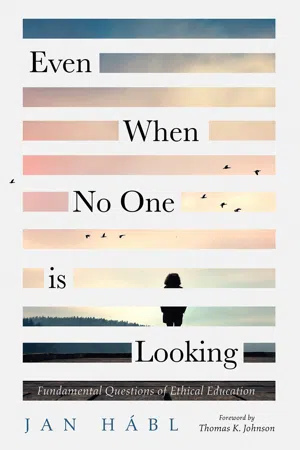![]()
Chapter 7
An Excursion in Method
“Therapy” versus “Formation”
In the postwar twentieth century, schools in the Eastern block countries were undergoing a specific type of “ethical” education. It was straightforward totalitarian, ideological indoctrination. In Western countries, educational theoreticians had more freedom to experiment and test the mutations of some of Plato’s previously-mentioned methods. With a little simplification, it’s possible to summarize these moral-pedagogical trends into two main streams. On the one side is the philosophy of so-called value clarification, which is sometimes also called the decision-making method or the critical thinking method. Because all these pedagogies together have the common feature of a personalistic, non-directive or client-oriented approach to the individual, I will refer to them here as therapeutic. There are many proponents and advocates, but some of the most notable should be named: Carl Rogers, Jean Piaget, Lawrence Kohlberg, Sidney B. Simon, Louis Raths, and Merrill Harmin.
On the other (strongly opposed) side are the advocates of character education or character development, which is the approach that its supporters often identify as “traditional” and its critics as “neoclassical.” Among the proponents are William Kilpatrick, Thomas Lickona, David Carr, Merle J. Schwartz, Peter Kreeft, Christina H. Sommers, and others. For a proper understanding of these approaches it’s necessary to review the cultural-ideological context of their origin and dispute.
The Therapeutic Method and Its Critics
Education in the sense of therapeutic clarification of values (and all related concepts) was in many ways a reaction to the postwar crisis of values and culture in general. The coming generation openly distanced themselves from the “morals” of their parents. In addition to freedom of expression, emancipation of human rights and an emphasis on autonomy, the prevailing sentiment of the flower children was resistance towards the “stale” culture which priggishly preached, commissioned, and taught. The culture of their fathers—because of the horrors of war that were still fresh in their memories—had lost its moral legitimacy and become more of a source of shame than something to pass along pedagogically. From such a background it was not surprising, therefore, that in the 1960s there arose a method which had an emphasis on discussion, openness, engagement, no guidelines, and so on. The goal of the method was neither the formation nor transmission of any kind of specific “bag of virtues,” in the words of Lawrence Kohlberg, or other moral material; that was indoctrination, which was considered one of the cardinal defects of all traditional educational approaches. Teachers and educators of this new type were given the task of helping students to think independently and critically, based on the psychological assumption that if the individuals themselves identified their own values, the internalization of those values would be easier and more durable than if they were mediated by some adult. The students were thus guided to discover, classify, and develop their own values, that is, to construct their own moral universe.
Experimental findings by developmental psychologists such as Piaget and Kohlberg conveniently arrived just in time. Although their theories of the moral and cognitive development of the individual were not originally intended to be educational, their application to pedagogy was soon found. Different variations of Kohlberg’s famous micro-story dilemmas were used in lessons as a tool for clarifying moral categories and values, a tool from which was expected to both move the students to a higher stage of moral development, and teach them independent moral judgment and argumentation.
How does the method work in didactic practice? For illustration I present two mini-stories: Kohlberg’s now famous “Heinz’s Dilemma” and “Sharon’s Dilemma” from the just as well known teacher’s handbook of Simon and his colleagues:
The questions for discussion are obvious: Was Heinz’s theft wrong or not? Should Sharon betray her friend or not? The discussion has to be well-controlled didactically in order to fulfill its task. Thefore the authors present the following instructions. 1) Recapitulate the basic facts of the story and ask a clear yes/no question. 2) Give the students enough time to think through the question and answer independently, ideally in writing, and with justification. 3) Next, the students say their answers aloud. If it happens that most of the group agrees, S. B. Simon recommends adding “balancing” information. For example, if most of the class votes for giving the name, the teacher can draw attention to the implications that would have on the girls’ friendship, or bring a new variable into the story—for example, what if Jill was from a weak social background, and so on. 4) The teacher is to lead the discussion in a fundamentally non-directive manner. No interfering unless necessary, only steering it by means of questions—either stimulating (if the discussion lags), or regulatory (if the discussion gets off track) or clarifying (to break down concepts or motives, etc). Teachers must also avoid the temptation to express their own opinions (even though the students request it), because that usually ends t...
